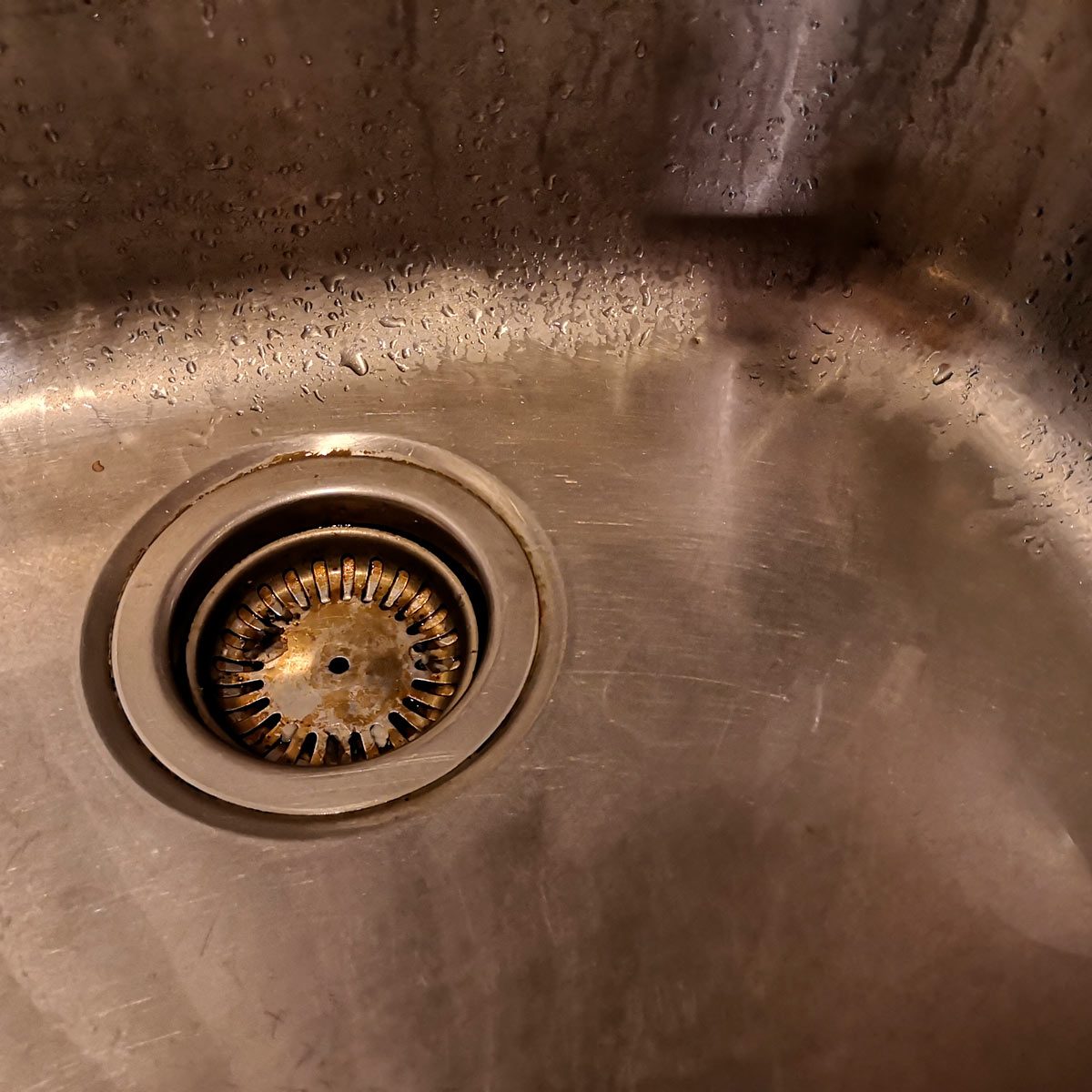Find out how to clean and polish a stainless steel sink with a few household items.
Introduction
Cleaning the kitchen sink often falls into the category of forgotten chores, keeping company with dusting the baseboards and vacuuming under the bed. But, shining up your stainless steel sink so that it looks like new is actually easier than you think. All you need are a few household ingredients that are probably already sitting in your pantry. Read on to for a step-by-step guide on how to clean a stainless steel sink.
Tools Required
- Cleaning Cloth
- Soft Sponge
- Spray Bottle
Materials Required
- Baking soda
- Lemon or Lime
- Olive Oil
- Vinegar
Watch How to Clean a Stainless Steel Sink
Project step-by-step (7)
Empty and Rinse the Sink
First, empty the sink entirely (including any rubber mats or metal sink grids). Then rinse the sink thoroughly with hot water, using the faucet sprayer, if you have one.

Sprinkle Baking Soda
Sprinkle the damp sink with baking soda. Cover the entire surface of the sink with a thin layer of baking soda and be sure to include the sides. Here’s how to make your own homemade cleaners with baking soda!

Scrub the Sink
Using a wet sponge or cleaning cloth, scrub the sink with the baking soda. Scrub in the direction of the stainless steel grain, paying close attention to areas that are stained or have stuck-on grime. You can add a little bit more water if needed. The water and baking soda will form a paste as you scrub, coating the sink. The baking soda works as an abrasive sink cleaner, but is gentle enough to not scratch the stainless steel surface. When you’re finished scrubbing the sink, here are 11 tips on cleaning the entire kitchen.

Using a Lemon, Scrub Again
Cut a lemon in half and use the lemon halves to scrub the sink again with the baking soda paste that is still coating your sink. The high acid levels in lemon juice (and lime juice!) can help to fight bacteria, not to mention freshen your sink with a lovely citrus smell.
Also learn how to clean and unclog your kitchen sink, and get your smelly, stopped-up drain running fast again.

Rinse
Rinse away the baking soda paste and lemon juice with water. Run the used lemon halves through the garbage disposal to clean and freshen it. Here’s more on how to clean a garbage disposal.

Vinegar for Water Spots
With a spray bottle filled with vinegar, spray the entire sink. Then buff the vinegar into the sink with a clean cloth, the vinegar works as a natural disinfectant and water stain remover. Is there anything vinegar can’t clean? Check out these 19 vinegar cleaning hacks that will save you money.

Dry and Shine with Olive Oil
Finally, dry the sink with a dry cloth, removing any remaining water or vinegar. Then, to really amp up the shine, use olive oil. Pour a small amount onto a dry cloth and rub it onto the sink, working in the direction of the grain. Wipe off any access oil and admire your glistening sink! No olive oil on hand? Here’s how to polish a stainless steel sink with flour!

FAQ
Can I use abrasive cleaners on my stainless steel sink?
You should not use any abrasive cleaners such as scrub pads to clean your stainless steel sink. These products can tarnish the finish which can leave the sink looking dull. Here’s how to remove scratches from stainless steel.
How do I remove rust spots from my stainless steel sink?
Create a paste using equal parts baking soda and water. Let that sit on the rust spots for a few minutes, then wipe it off with a cloth — do not scrub.





















